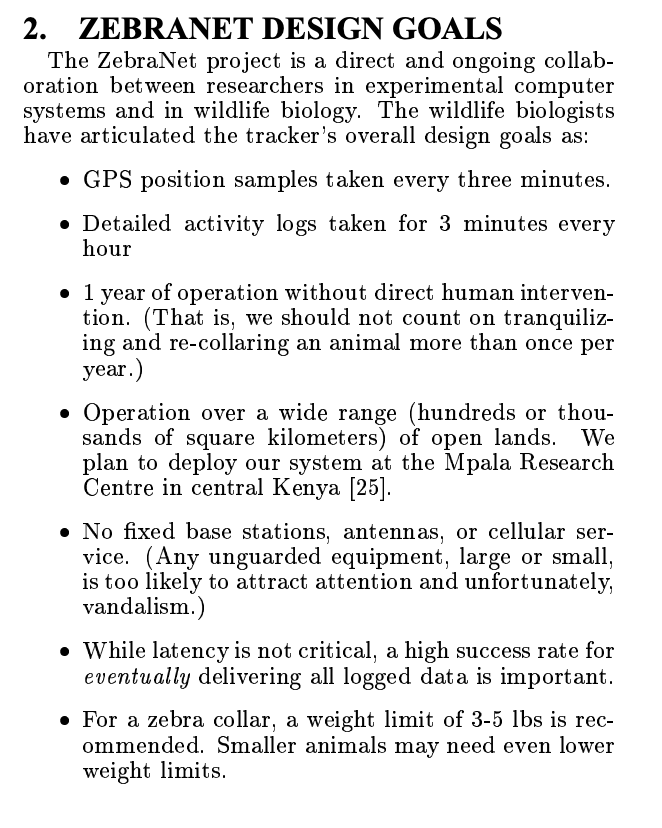I& #39;ve been thinking about peer-to-peer zebra tracking networks and speculative sci-fi network design, because of course I have.
ZebraNet is a fascinating project that was a collaboration btwn a group of computer scientists and field biologists at Princeton in the late 90s, tasked with coming up with a system for tracking zebra migrations in a time before any of the tech you would want to do that
The team wanted to fit collars on captured zebras to track their movements as they embarked upon long migrations across central Kenya. The trackers thus had to work for at least a year at a time, and be able to operate in a range of thousands of square kilometers
These are the exact restrictions and goals - I& #39;m pulling a bunch of this info from a 2002 paper written by the team, which you can find here: https://www.princeton.edu/~mrm/asplos-x_annot.pdf">https://www.princeton.edu/~mrm/aspl...
The core problem for the engineering team was data collection. Even if these collars collected gps data, the researchers had no way of easily accessing it. Without a cell signal or other long-range wireless communication, the collars had to be manually accessed to get the data
When the collar is attached to a roaming zebra, & #39;manually accessing& #39; the data means tracking down and tranquilizing one. doing this en-masse was just not viable. Instead, the team came up with an honestly incredible solution: a peer-to-peer network
It worked like this: each collar would collect and store gps data on where its zebra went. When two zebras got close enough, their collars would swap data. Each collar would get full copies of ALL the gps data stored on the other. Basically they& #39;d go "here& #39;s where I have been"
Crucially: this included any data from any other collars that collar had already interacted with! It wasn& #39;t just the collars going "Here is where I& #39;ve been, write this down", it was "Here is where I& #39;ve been, and where everyone I& #39;ve run into has been"!!
Since zebras are social, this meant that the researchers could be confident that eventually, any given zebra collar would contain fairly recent gps data from any. other. collar.
This means that to do a full survey of ALL of the collars they had deployed at any given time, all the researchers had to do was find a single collar, and collect the data from it!!
They also used this system to do live patches and updates for already deployed collars: all they had to do was put updated software on one collar and put it on a zebra, and then when collars interacted they& #39;d pass on the patch, and eventually all the collars would have the patch!
This project is fascinating to me because its such a good solution to the v specific problem of & #39;no easy long distance wireless communication& #39;. Networks are fascinating and are excellent places to look for inspiration for tech that doesn& #39;t just look like wifi and touchscreens
It& #39;s exciting to think about what similar solutions might look like for things like long distance communication btwn spaceships in a scifi setting! Passing ships could handshake and pass off messages or updates - news would propagate through space gradually rather than instantly

 Read on Twitter
Read on Twitter


